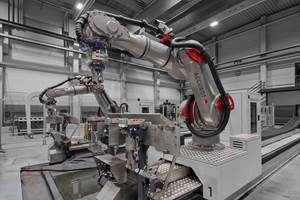Sierra Nevada challenges NASA crew transport contract
Sierra Nevada, whose Dream Chaser astronaut transport vehicle lost out in a NASA contract to Boeing and SpaceX competitors, has filed a legal challenge to the award, claiming its vehicle is as functional and less expensive than Boeing's.
Sierra Nevada Corp. (SNC, Sparks, Nev., USA) announced on Sept. 26 that it has filed a legal challenge to the award of contracts to The Boeing Co. (Chicago, Ill., USA) and SpaceX (Hawthorne, Calif., USA) under the Commercial Crew Transportation Capability (CCtCap) program. The CCtCap program will restore U.S. transportation capability to the International Space Station.
SNC, Boeing and SpaceX submitted separate proposals for the CCtCap program. While all three competitors were found to be compliant and awardable under the criteria set forth in the request for proposal (RFP), only two proposals were selected (Boeing and SpaceX), one of which would result in a substantial increased cost to the public despite near equivalent technical and past performance scores.
In its 51-year history SNC has never filed a legal challenge to a government contract award. However, in the case of the CCtCap award, NASA’s own Source Selection Statement and debrief indicate that there are serious questions and inconsistencies in the source selection process. SNC, therefore, feels that there is no alternative but to institute a legal challenge.
The company believes that, in this time of critical budget limits, it is more important than ever to deliver the best value to the American public. With the current awards, the U.S. government would spend up to $900 million more at the publicly announced contracted level for a space program equivalent to the program that SNC proposed. Given those facts, SNC believes that a thorough review must be conducted of the award decision. The company feels it owes this extra effort to its employees, the more than 30 Dream Team U.S. industry partners, 10 university partners, 10 international space agency and industry partners – all of whom believe in Dream Chaser and that the proposal that was submitted by SNC is the best choice for NASA and the American public.
Importantly, the official NASA solicitation for the CCtCap contract prioritized price as the primary evaluation criteria for the proposals, setting it equal to the combined value of the other two primary evaluation criteria: mission suitability and past performance. SNC’s Dream Chaser proposal was the second lowest priced proposal in the CCtCap competition. SNC’s proposal also achieved mission suitability scores comparable to the other two proposals. In fact, out of a possible 1,000 total points, the highest ranked and lowest ranked offerors were separated by a minor amount of total points and other factors were equally comparable.
SNC says its Dream Chaser design provides a wider range of capabilities and value including preserving the heritage of the space shuttle program through its design as a piloted, reusable, lifting-body spacecraft that embodies the advanced technologies of today and flexibility that enables the innovations of the future. It was also the only vehicle remaining in the Commercial Crew Program that was not a capsule.
SNC’s filing seeks a further detailed review and evaluation of the submitted proposals and capabilities. SNC says takes the nation’s human spaceflight capability and taxpayer’s money very seriously. SNC says it believes the result of further evaluation of the proposals submitted will be that America ends up with a more capable vehicle, at a much lower cost, with a robust and sustainable future.
Related Content
Carbon fiber satellite arm reduces weight, simplifies assembly onto naval vessels
Satcom developer EM Solutions partnered with ACS Australia to replace an aluminum arm design with a 65% lighter, one-piece, corrosion-resistant carbon fiber/epoxy alternative.
Read MoreNew GTL breakthrough in composite tubing for liquid hydrogen in aircraft and space vehicles
Tests versus stainless steel tubing show 10 times faster chill down, fuel flow in 2 seconds and less boil-off for significantly faster fueling and refueling of LH2-powered space vehicles, aircraft and trucks.
Read MoreCIRA qualifies CMC structures for the reusable Space Rider
Italian team designs, builds and tests multiple large, complex thermal protection system structures made from patented ISiComp C/C-SiC ceramic matrix composites.
Read MoreAutomated robotic NDT enhances capabilities for composites
Kineco Kaman Composites India uses a bespoke Fill Accubot ultrasonic testing system to boost inspection efficiency and productivity.
Read MoreRead Next
Next-gen fan blades: Hybrid twin RTM, printed sensors, laser shock disassembly
MORPHO project demonstrates blade with 20% faster RTM cure cycle, uses AI-based monitoring for improved maintenance/life cycle management and proves laser shock disassembly for recycling.
Read MoreScaling up, optimizing the flax fiber composite camper
Greenlander’s Sherpa RV cab, which is largely constructed from flax fiber/bio-epoxy sandwich panels, nears commercial production readiness and next-generation scale-up.
Read MoreUltrasonic welding for in-space manufacturing of CFRTP
Agile Ultrasonics and NASA trial robotic-compatible carbon fiber-reinforced thermoplastic ultrasonic welding technology for space structures.
Read More











